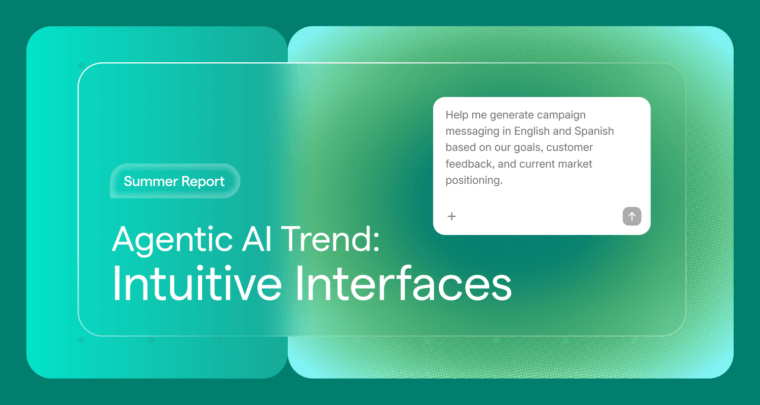
Generative AI tools can make us more productive and more creative. They can help us develop new ideas, access information with ease, and streamline a variety of personal and professional tasks. However, the tools can’t read our minds. We need to ask for what we want. These requests or instructions are called AI prompts.
At first glance, the idea of AI prompts might seem incredibly straightforward. You ask for something, and the tool provides an answer. And yes, the process can be that simple! On the other hand, some ways of going about it are better than others. There are techniques that can help you take full advantage of the power of these generative AI tools.
To get the most out of AI tools, it’s important to understand how those tools process user prompts. In addition, it’s helpful to know the different types of prompts you can use to elicit information from the AI. In this guide, we’ll consider both of those factors and also explore some strategies for crafting the most effective generative AI prompts.
What is an AI prompt?
Generative AI tools are a powerful technology. That power can be unlocked when the right instructions are combined with the right tool. That’s where prompts come in. AI prompts are the text instructions a user provides to an AI model to get the desired output. If you’ve used ChatGPT or Claude AI before, the text you typed in the chatbot is the prompt.
The specificity of a prompt is crucial. More detailed, nuanced prompts yield more relevant and useful responses from generative AI tools. For example, imagine you wanted help drafting a professional email inviting colleagues to a webinar. You could craft a basic prompt like “Write a formal email invitation for a webinar.” That might yield a serviceable output. But if you add context—such as details about the target audience, registration requirements, and guest speakers—that can significantly improve the quality and relevance of the AI-generated content. The key is crafting prompts that give the model a clear understanding of your desired output.
How AI prompts work
To understand AI prompts, it’s helpful to know the basics of how generative AI technology works.
When given the right prompts, generative AI tools can produce surprisingly impressive and original outputs. But how exactly does this process unfold? How does a generative AI tool take a line of text like “Create a recipe using tomatoes, leftover chicken thighs, and pasta” and produce a plausible weeknight dinner idea?
At a high level, these tools rely on natural language processing (NLP) to understand user requests and generate relevant responses. When you feed a text prompt into a generative AI tool, the system first breaks your prompt into smaller bits—words or word fragments—that it can manage. Every generative AI tool is powered by an AI model that has a dynamic understanding of how words and phrases work. The system uses its learned understanding of grammar, context, and diction to infer your intent and desired output.
This intent recognition allows the AI to identify helpful patterns in the prompt. For example, if you asked the model to “Write a haiku about butterflies flying off the coast in Costa Rica,” the AI model can deduce the requested format (a haiku), the subject matter (butterflies flying), and the need for imaginative, creative writing. The system then combines all these parameters to produce content that’s coherent and tailored to your request.
Unlike traditional search engines, generative AI tools don’t search for keywords to regurgitate information. Instead, they aim to understand and engage with prompts in a way that mirrors how humans communicate. By using their NLP capabilities, these models can generate original and contextually relevant responses rather than rely on rigid keyword matching. The nuances of how a prompt is phrased can have a major impact on the AI model’s interpretation and the resulting output, so it’s important to take time to frame your prompts precisely and clearly.
Types of AI prompts
The key to maximizing AI tools is understanding the various types of prompts you can use. For example, completion prompts ask the model to continue an incomplete idea, while informational prompts are similar to querying a search engine for factual information. The choice of prompt depends on your specific needs—whether you’re seeking a detailed response, a list of early ideas, or a more open-ended exploration.
Below, we offer an overview of the most common types of prompts you can use with generative AI and describe when to choose one type over the others.
Classification prompts
These prompts ask the AI model to categorize or group information based on specified criteria. The model might use categories, labels, descriptions, or other classifiers to sort the information. Providing the AI with the relevant categories upfront can lead to more accurate classifications. Users turn to these prompts when they need to characterize information or organize a dataset in a particular way.
Examples of this prompt:
- Are the reviews of the Dune movie in major publications generally positive, negative, or mixed?
- Compared to other solar energy stocks, has NXT performed well or poorly over the last seven years?
Reasoning prompts
Reasoning prompts ask the generative AI tool to draw logical conclusions and inferences about a given concept, problem, or scenario. These can range from real-world situations to hypothetical challenges or fictional ones.
Examples of this prompt:
- How would a temporary closure of the Brooklyn Bridge impact New York City traffic?
- What are some likely consequences of the U.S. government declining to regulate AI development?
Completion prompts
In this prompt type, the user asks the generative AI model to continue or expand upon an incomplete sentence, idea, or problem. By providing a portion of the unfinished content in the prompt, the user gives the model a clear starting point to build upon. Completion prompts can be useful in many ways. They can aid the writing process, elicit answers to difficult questions, or help a user make progress on an unfinished task or project.
Examples of this prompt:
- Finish this sentence, please: The rainiest month in Florida is…
- Create a pre-vacation checklist where the first two items are to book your flights and reserve a rental car.
Creative prompts
Sometimes, people use AI tools to help brainstorm or imagine new artistic or creative ideas. These include literary works like stories, songs, and sci-fi scripts, along with professional ones like ads, website copy, and brand marketing ideas. Examples of this prompt:
- Compose a fun new jingle for a chocolate bar called Chocodream Bar.
- Write a fictional story about a boy who experiences bullying at school, overcomes his social challenges, and develops self-confidence. Along the way, his friends and parents help to bolster his self-esteem.
Comparison prompts
If you want to compare the attributes of different objects, concepts, products, ideas, or other variables, consider using a comparison prompt. With these, a user instructs the AI model to pit two or more things against one another. The response might list relevant attributes or make a judgment about the utility of one variable versus another.
Examples of this prompt:
- Compare the specs for a 2017 Honda Civic and a 2019 Toyota Corolla.
- Contrast the dynamics of rock recordings from the 1970s to rock recordings from the 2000s.
Dialogue prompts
If you’re a writer working on fiction, you might need help developing the dialogue between characters. Dialogue prompts allow you to use generative AI to get ideas for what your characters might say to each other.
Examples of this prompt:
- I’m writing a short fictional story and need help with my dialogue. In my piece, there’s a scene where two people are left in an escape room and need to get out. Create a dialogue between them as they navigate leaving the room that has only one door and no windows.
- Pit Kant’s conception of morality against Hume’s in the form of a debate.
Informational prompts
Informational prompts are similar to querying a search engine—the user is seeking specific information or facts. Typical prompts include product research, historical knowledge, trivia questions, and basic medical information.
It’s important to remember that generative AI tools can hallucinate and provide plausible-sounding but inaccurate information. To improve the reliability of results, a user can ask the model to provide references or sources to back up key facts. Or you can ask the AI model to summarize information from a specific, trusted domain.
Examples of this prompt:
- What is a solar eclipse?
- Provide a brief explanation of how antibiotics work.
Instructional prompts
This type of prompt is useful if you need to create a set of guidelines or step-by-step instructions for completing a task. This could be a recipe, instructions for a DIY project, or operational procedures for a team.
Examples of this prompt:
- How can I remove a red wine stain from a white cotton shirt?
- Provide a list of safety guidelines for maintaining fire extinguishers in office environments.
Interactive prompts
You can approach an AI model as a chatbot and converse with it as if you were talking to a regular person. You can ask the AI model to mimic a certain profession and practice a dry run of your expected conversation to get the most interesting results. This can help you prepare for an upcoming rent negotiation or recruiter screen. Or you can ask the AI model to imitate a fictional character from a book, and you can have a dialogue with that character.
Examples of this prompt:
- Pretend you’re a hiring manager at a software company, and I’m interviewing for a job in quality assurance.
- Act like you’re Marlon Brando in On the Waterfront. I’ll pretend to be Karl Malden, and let’s see where this goes.
Summarization prompts
Sometimes, you want to quickly digest a large amount of material. Perhaps it’s a journal article for some research you’re doing. Or maybe you need to examine several successful keynote speeches to generate ideas for your own speech. Whatever the case, you need a way to summarize a substantial volume of information so that you can understand it quickly. Summarization prompts will help you here.
Examples of this prompt:
- Provide a summary of the plot and themes in Dostoyevsky’s Crime and Punishment.
- I need a summation of the article entitled “Radical Approaches to Eliminating Child Malnutrition in Late 19th Century Britain,” from the June 2021 edition of Sociology and History.
Translation prompts
You can use generative AI tools as digital translators. Just tell the AI the language to which you would like it to translate a word, phrase, or block of text.
Examples of this prompt:
- Translate the word “alphabet” into Polish.
- Provide an English translation of the Ecuadorian president’s speech from April 11, 2017.
How to craft effective AI prompts
Keeping in mind the different prompt types at our disposal, consider this checklist when writing your AI prompts:
1 Choose one goal or task
To achieve the best response from generative AI, it’s best not to overload the tool with multiple questions or requests in a single prompt. Instead, identify a single goal or task that you’re trying to address. Then submit a highly focused prompt. You can always provide further prompts after receiving a response to the initial one.
2 Identify audience attributes and needs
If you’re trying to generate original or creative content for others, the AI needs to know for whom it is writing and what their preferences are. In other words, it’s essential to know your audience before asking generative AI to make something for them.
If you have developed a persona for your audience, tell the AI about it! Provide details about the audience, their demographics, preferences, or the context in which they will be viewing or consuming the content. It’s also a good idea to describe the voice, tone, and style you want for the AI’s output. And if the format of the response matters, be sure to specify that too.
3 Use clear and precise language
Precision is your friend when it comes to writing prompts. Even though AI tools can understand slang and casual language, it’s best to write clear prompts that are easy to understand and difficult to misconstrue. AI tools are not perfect; in fact, they are prone to hallucinations and can make incorrect assumptions when prompted. So, write clear, unambiguous prompts to ensure the model understands what you’re asking for.
4 Detail is great
The more context and specifics you share with your AI model, the better equipped it will be to deliver what you need. Avoid vague or open-ended requests. Instead, craft prompts that include details about the task, target audience, tone, response format, and situational context.
Instead of asking your AI model to write a product description for a new skin-care brand, you could prompt it with something like “Write a 150-word product description for a new line of all-natural skin-care products. The description should have an upbeat, easygoing, optimistic tone and should highlight the products’ eco-friendly and cruelty-free ingredients. The target audience is health-conscious millennials interested in clean beauty.”
5 Provide examples of desired outputs
Provide sample content that demonstrates the format, structure, and key elements you’re looking for in a response. Doing so can help your AI model better understand and reproduce the type of output you need. For example, if you want the model to generate a set of technical guidelines, include a template or sample sections in your prompt, or better yet, a completed canonical example that has all the attributes you want. This contextual information allows the AI to generate a response that closely matches your expectations.
Effective prompting can be time-consuming
Creating effective prompts for AI can often be a more complex task than anticipated, requiring significant time and effort to achieve desired outcomes. For certain specific tasks, there are solutions like Grammarly that streamline the process, eliminating the need for intricate prompt design. One example is Grammarly’s AI generator for writing a cover letter. These specialized tools, all of which are free, simplify the task because, by design, they understand the expected output, which simplifies the process for you.
Grammarly has extended this user-friendly approach to other writing tasks, such as drafting job descriptions and composing blog posts. By providing tools that are tailored to these specific purposes, Grammarly significantly reduces the time and effort typically required for prompt creation, offering a straightforward alternative to more traditional, prompt-heavy AI applications.
Conclusion
The quality and characteristics of generative AI prompts have an outsize impact on the responses users receive from AI tools. To get the most out of generative AI tools, it’s important to be mindful of the different types of prompts available and the strategies for optimizing every request. Navigate responsible AI use with Grammarly’s AI checker, trained to identify AI-generated text.
Crafting great prompts is part art, part science. By writing prompts that play to an AI tool’s strengths—and that align with the type of information you expect the tool to generate—you can fully take advantage of these exciting and powerful technologies.






